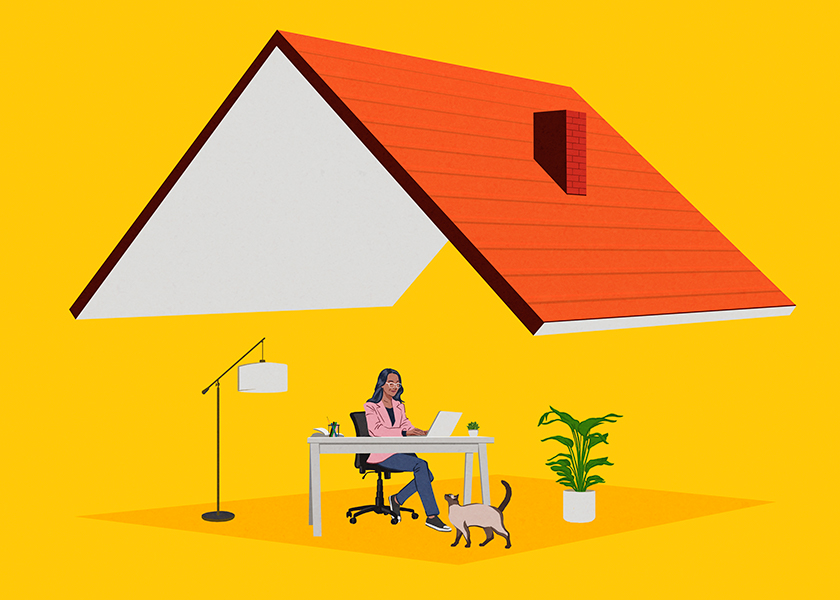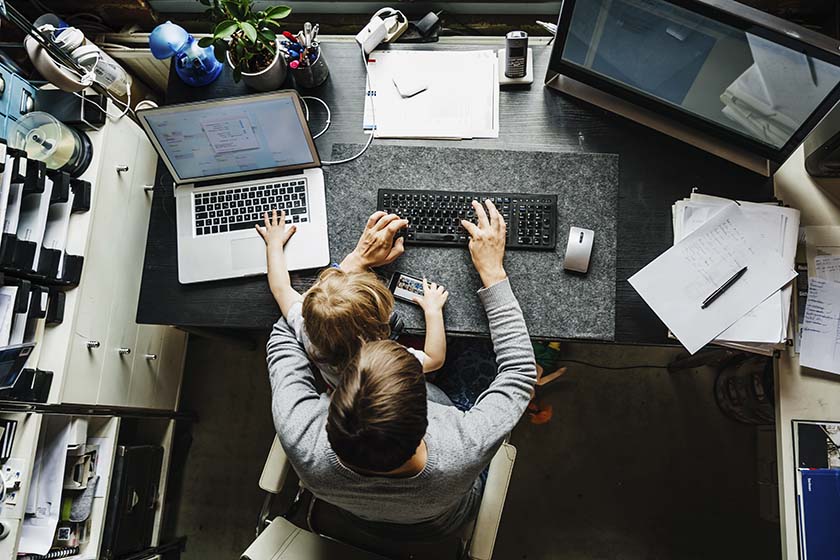- Home |
- Search Results |
- The end of the 9-5? How work will change after coronavirus

The vast majority of the UK – and, indeed, the working world – have been under lockdown for several weeks. Millions of us who used to grumble about the commute and pop out for our lunches every day have had to create office spaces at home, instead. Two months ago, few of us would have known what Zoom was. Now, we spend hours on it a week, sometimes hours a day, trying to communicate with colleagues from the safety of our own homes.
In some ways, we’ve coped far better than we might have imagined. We mute our mics when we’re not speaking, have rigged up rudimental standing desks and whip up plates of things for lunch far fresher than a sandwich in a box. Sometimes, after hours, we’ll find ourselves wistfully thinking about a new way of working after lockdown: maybe we could manage with more hours at home? Perhaps our work weeks could be different.
We’re juggling more than ever, with childcare, remote working and the general anxieties of the Covid-19 crisis all around us, but surely that is a sign that things could change for the better once we’re allowed out?
The rise of the four-day week
For the experts and thinkers who have written books about working life, lockdown provides an intriguing experiment: what happens when millions work from home, long-term, for the first time? Could this be the moment when the 9-5 as we know it dies?
Alex Soojung-Kim Pang has made a career out of arguing for the four-day week. The author of Shorter and Rest, two books which make a manifesto of working less, more productively, he believes that lockdown can only have an impact on how companies work in the future. ‘For organisations that were previously sceptical of flexible work and working from home, I think it’s going to be difficult for them to maintain their strict policies against those,’ he says. ‘I do think that, in the long run, this period will spark an increase in demand for flexible work.’
If nothing else, the fact so many people have successfully worked from home suggests that we will be able to do so in future, argues Alison Grade, who wrote The Freelance Bible – and, more intriguingly, from even further distances. ‘Things will change with regards to how often people are in an office, how many events will happen face-to-face,’ she says. ‘Clients are already reaching out to me from much further than they would before corona, because they know that geography places less of a limit now.’

But while change may be on the horizon, we’re sadly deluded if we think we can conjure a commute-free utopia because we’ve managed to change our Zoom backgrounds, says Tom Cheesewright, a futurist who has written Future-Proof Your Business. ‘The early days of social distancing I read loads of features that suggested that the best way to work from home was to replicate the office environment as closely as possible,’ he explains. ‘To get up at the same hour, set up your house like it’s your office. But office life and the 9-5 don’t acknowledge that we all have different body clocks, or that we’re all productive in different ways. It doesn’t release that straight jacket of the office.’
Cheesewright points out that the restraints of the office aren’t just physical: ‘It’s very difficult for managers who have been brought up in a world of presenteeism culture to shift to measuring people by the extent to which they achieved their tasks.’
Helen Tupper, author of The Squiggly Career and CEO of Amazing If, a company that aims to improve how we work, told me some sobering results from research into how the first month of working from home was affecting people. ‘There’s a mantra that work has improved because it’s allowed people to be at home,’ she says, ‘but I think in some ways it’s worse. Virtual presenteeism is alive and kicking more than it was in the office. I think people are in back-to-back meetings where they’re required to put their camera on and they are more chained to their desk than they have ever been.’
'One of the first things to go will be those hour-long meetings'
Pang suggests that working effectively and efficiently from home comes from building the same boundaries that we would expect in the office, so that, as he says, ‘we’re not trying to multitask our ways through conference calls through childcare and looking after our sourdough starters’.
Nevertheless, all of the experts I speak to agree that change is inevitable. While the immediate change to working from home has seen a flush of new meetings (something Tupper says is leaving 70 percent of the people she surveyed ‘more overwhelmed by work now’), they’ll be one of the first things to go in the new, post-lockdown era – for safety if nothing else, says Pang: ‘One of the first things to go will be those hour-long weekly staff meeting where everyone is checking their email after seven minutes and where everyone’s breathing the same air. Companies will have to be smarter about how they use meetings, which will inevitably result in fewer of them.’
Cheesewright hopes for a time when people can be judged on what they deliver, by when, rather than how long they sit at a desk. ‘As long as you’re beating the expectations of your employer, you shouldn’t feel obliged to keep to those office hours,’ he says, offering up, somewhat deliciously, that the notion works even if it's ‘two hours of work and six of Netflix.’
The workplaces of the future
Tupper believes that we’ll see ‘blended working’ evolve, meaning ‘more fluidity in people’s working patterns’ – i.e, a combination of in-office hours where necessary, such as for team meetings, but more remote work for solo projects and concentrated work.
She also points out that changing routines could extend to other parts of our professional lives: ‘People will no longer want to wait for the annual review that comes around in October, they’ll want more on-demand working: to work and grow and develop and learn when they want to do it.’
Is it possible? Yes – but it will take time. Cheesewright anticipates a 'plus or minus 5 per cent change that will continue to come over the next few years,’ adding, ‘it won’t be the flexible working revolution everyone’s expecting.’
Pang, meanwhile, expects far fewer short-haul flights for hour-long meetings. He also points out that the offices we return to will be drastically different from those we left: in China, workspaces are being re-designed to enforce social distancing. ‘There’s a move away from open-plan offices, and things such as one-way passages along hallways are being implemented to try and space people out. There may well be temperature checks when you swipe in.’ It all remains to be seen. But one thing is for sure. As Pang says: ‘This is an episode that is going to change how people work at work.’